2022 Tour de France Mountains Preview - Let's Rank the Mountains

Col du Galibier will be climbed twice
Bonjour, bienvenue en France. La Grande Boucle is more of a half circle this year. With a start in Copenhagen, the peloton will then evacuate to Dunkerque and ride down the east side of France eventually reaching the Pyrénées mountains. Along the way, the route visits the five largest mountain ranges in France (Vosges, Juras, Alps, Massif Central, and Pyrénées).
There are six mountain stages. Vosges (1), Alps (3), Pyrénées (2). Five of these stages (arguably all six) are mountain-top finishes.

Strangely the ever present Col du Tourmalet is not in this year's Tour. But don't worry we have Alpe d'Huez for Jens and all the other fanboys. At 2 642 metres, Col du Galibier will be the highest point of the race. For our UK readers that is 8 668 feet. In fact both the north and the south side of Galibier will be climbed. It will be the first ascent (north side) when the Prix Henri Desgrange will be awarded to the first rider to the summit.
By my count there are 59 classified climbs:
hors categorie = 7
category 1 = 10
category 2 = 6
category 3 = 14
category 4 = 22
This will be a long article.
I’ll add pictures for those that hate reading. But below we will:
- Rank all the Hors Categorie, Cat 1, and Cat 2 climbs by difficulty
- Take a look at all six mountain stages.
- Give a few brief recommendations for visiting cyclo-tourists.
- Let you, dear readers, vote to decide the Queen Stage.
Allons-y (let’s go)! Below are the statistics for the twenty-three Hors-Categorie, Category 1, and Category 2 climbs including a difficulty rating.
DIFFICULTY RATING METHODOLOGY - To rate the climbs I have used the difficulty index from www.climbbybike.com that we have used previously. I know, I know, it’s a slightly flawed formula. But it’s easy to calculate and useful as a starting point for discussion. I am using the official Tour de France lengths and average grades for each climb, so rankings may differ slightly with those at climbbybike.com.

According to our methodology Col du Granon is the toughest climb in the 2022 Tour de France. Surprisingly, this is only its second Tour appearance - in part because it is a dead-end at least as a paved road. It's first appearance in 1986 was the highest mountain-top finish in Tour de France history (2413m), now only surpassed by the 2011 mountain-top finish on Galibier (2642m).

Col du Granon
You will see Col du Granon referred to as "Col du Granon Serre Chevalier" in official Tour de France literature. This is just marketing. Serre Chevalier is a nearby ski station that is clearly paying some marketing €'s. There are no ski lifts nearby. Most of Serre Chevalier skiing is in the mountain massif across the valley from Granon
The eight toughest climbs appear in just three stage (11,12, 18), all with mountain top finishes. Keep this in mind when voting for the Queen stage.
You likely know that the Tour starts in Denmark. But did you also know that the peloton will visit another country? The 9th toughest climb (Col de la Croix) and the 20th toughest climb (Col des Mosses) are in Switzerland as our cycling overlords have organised Stage 9 starting from UCI headquarters in Aigle. The stage finishes in France after crossing the border at Pas de Morgins the 11th toughest climb.
Before we discuss the 6 official mountain stages, here are the same twenty-three climbs grouped by stage:

Let’s walk through the six mountain stages:
Stage 7: Vosges Mountains

La Planche des Belles Filles is a small ski station in the Vosges. This is its 6th Tour debuting in 2012. I sometimes call it one of the least charming major climbs I know. It is quite contrived: an extremely steep, modern road without much view. But for a pro bike race? Fantastic. It is deviously evil. Ouch!

The name La Planche des Belle Filles comes from an episode in the 30 years war in 1635 when according to legend the young girls of a neighbouring village hid themselves up this mountain to escape the cruel Swedish mercenaries who were stationed nearby at Plancher-les-mines. To escape abuse and probable massacre they preferred to commit suicide by jumping from a plank into the black waters of a lake on the plateau. A wood statue by a local artist commemorates this legend.
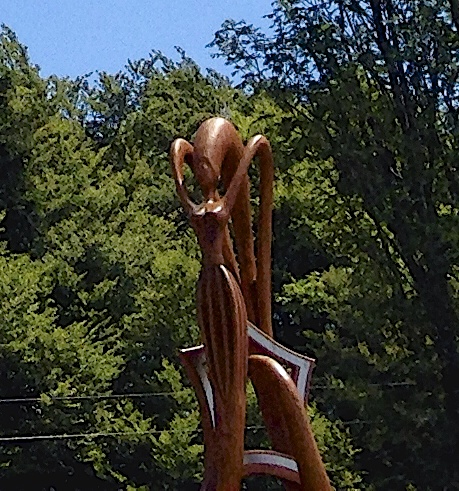
"Super" was added to the name in 2019 when the "super" steep final ramp was extended moving the finish to an altitude of 1140m versus the previous 1035m. Chris Froome won the inaugural 2012 stage with a time 16'11" . My time was closer to Etienne's 43 minutes.

The final kilometre: Steep modern road.

Stage 9: Swiss Alps
This stage not only starts in Aigle, the UCI folks will also get cheer the peloton when it passes them again 150 kms into the stage.
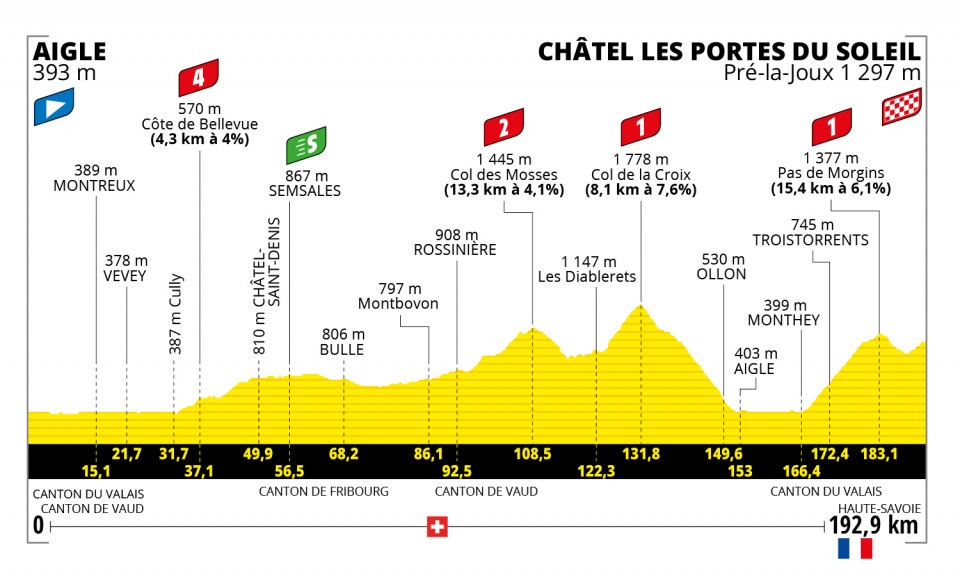
As the bottom of the chart above shows this stage is primarily in (the French-speaking) part of Switzerland or Suisse Romande. Not surprisingly, Col des Mosses and Col de la Croix often feature in the Tour de Romandie. But both cols have previously appeared in the Tour (Mosses 6 times, 1947 debut. Croix twice).
I endeavour to give you the best photographs of climbs I can. So ...... here is Col des Mosses:

My editor had demanded I do better. So here is a Col de la Croix several years ago freshly cleared of snow for a Romandie stage. Podium Cafe kit!!

Snow plough almost in view. High above nearby is glacier skiing at Diablerets ski station. It's a beautiful climb

Is this stage a mountain-top finish? Sort of. It climbs the 11th toughest climb, Pas de Morgins.This is the border between Switzerland and France - "Pas" is an old word occasionally used instead of col, for a mountain pass. The route briefly descends into France and then there is a brief, not too steep, uphill finish in Châtel.

The finish town is Châtel. Les Portes du Soleil is more Tour marketing. It is the name of a gigantic ski domain uniting 13 resorts some Swiss, some French (eg. Avoriaz and Morzine). Yes, you can ski between countries quite easily all day long.
For the Cyclo-tourists:
What's the steepest % grade sign I have ever seen while biking. Exactly on the France/Swiss border in the heart of the Portes du Soleil ski domain is the Le Mur Suisse (The Swiss Wall), a famous ski piste.
I had cycled up on ski slopes on the French side and after checking my brakes decided 90% was too steep a descent for me. Châtel is in the distance, off to the left, out of the photo.

Stage 11: French Alps
What a stage! Wow.
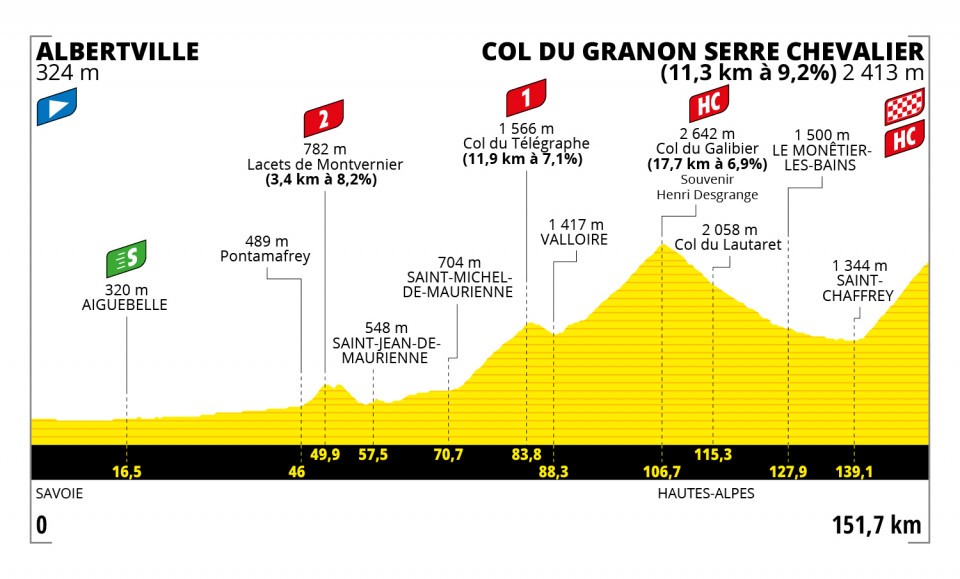
As an appetiser stage 11 will start with a visit to the amazing Lacets de Montvernier.
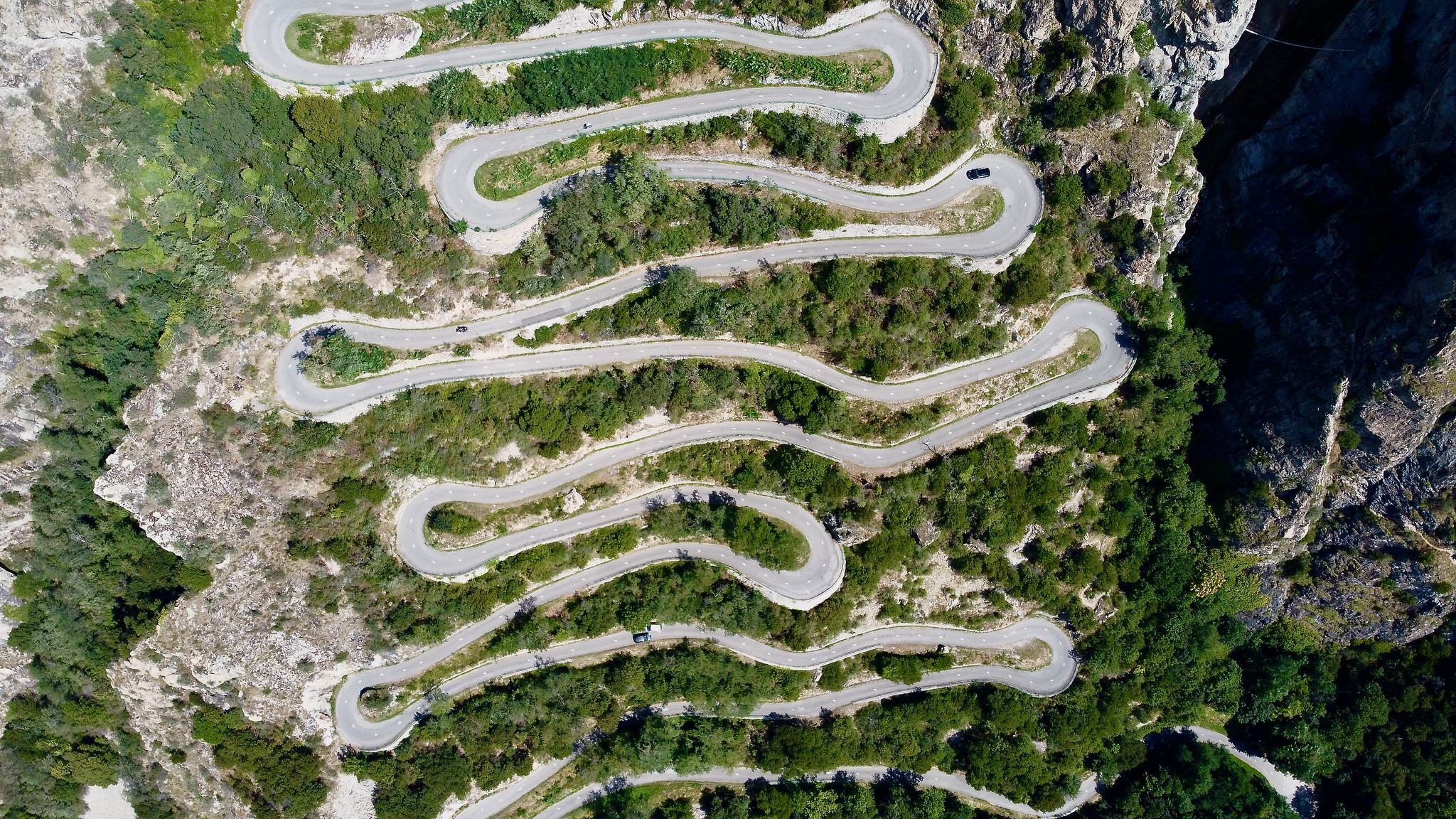
A video:
For the cyclo-tourists: The only way without a helicopter or drone to get a clear view of the hairpins: A few hundred metres beyond the summit on right is a trail through a farm road that leads to cliff look-out:
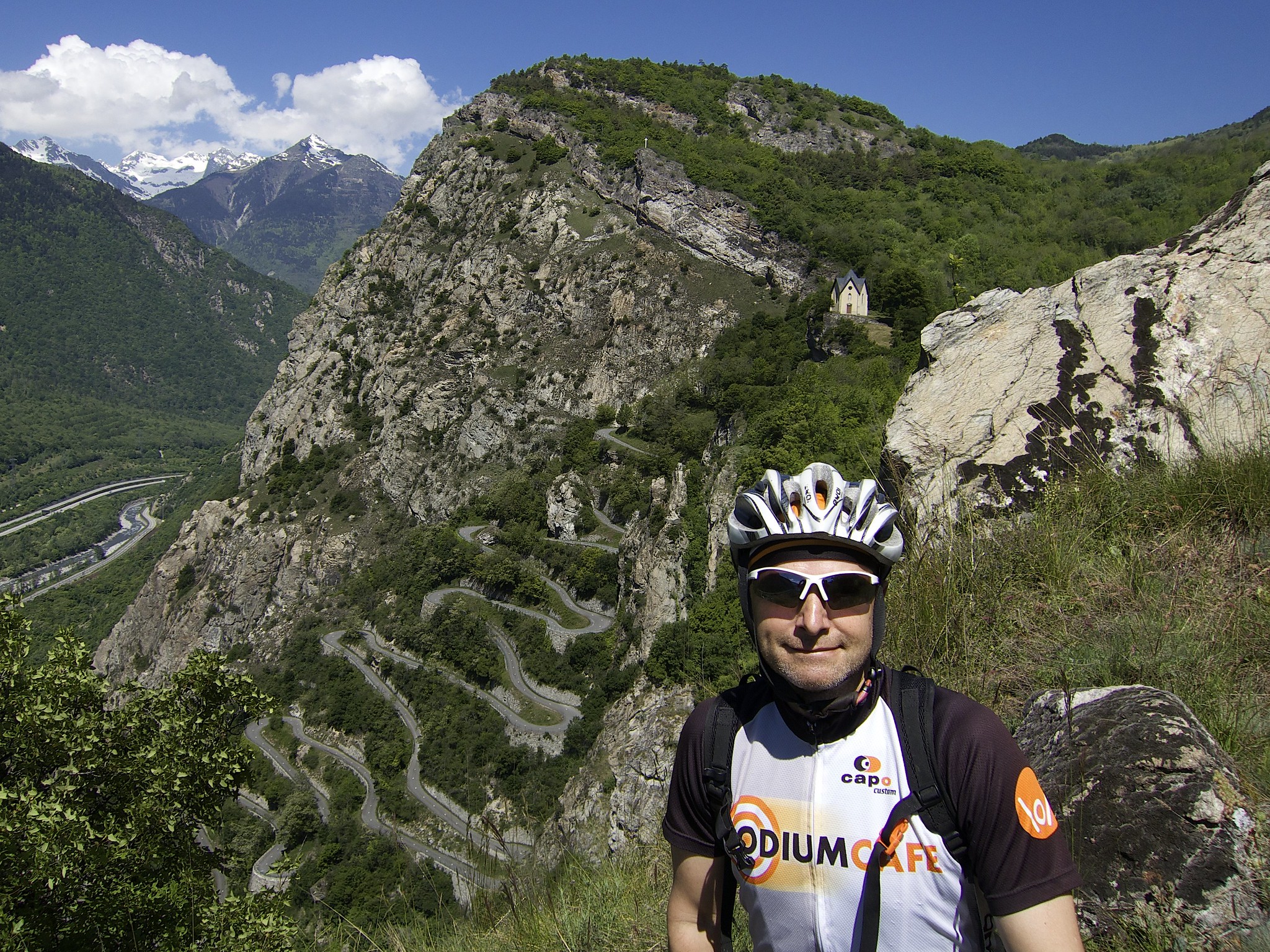
Next, the stage climbs the legendary north side of Col du Galibier via Col du Télégraphe.

Just of the main road at Col du Télégraphe is the Fort du Télégraphe perched on a cliff overlooking the valley below.
Fort du Télégraphe "previously accommodated a telegraph of the Chappe system using articulating arms to send messages between Lyon and Milan, and after 1809, Venice."

Often when climbing Galibier there will be strange straw art. I'll avoid posting the bizarre nude stuff and just post this excellent polka-dot cyclist exactly at the summit of Télégraphe.


The first ascension of Galibier in the Tour was the year following the 1910 high mountain experiment in the Pyrénées. Think Tourmalet, Aubisque, "assassins," etc. But Galibier was an order of magnitude bigger – a half vertical kilometre higher than Tourmalet.
Years ago I wrote an article "Col du Galibier - A Brief History" - see here.
Oh ! Sappey ! Oh ! Laffrey ! Oh ! Col Bayard ! Oh ! Tourmalet ! je ne faillirai pas à mon devoir en proclamant qu’à côté du Galibier vous êtes de la pâle et vulgaire bibine : devant ce géant, il n’y a plus qu’à tirer son bonnet et à saluer bien bas !"
Translation: A list of famous mountain passes then "I will not fail in my work in proclaiming that beside Galibier you are but pale and vulgar beers. There is nothing more to do but tip your hat and salute from well below!"Henri Desgranges 1911 – Tour Director and publicist extraordinaire
Galibier is beautiful, epic, amazing. The col is named after the mountain peak in the centre of this photo: Le Grand Galibier (the col is 6 kilometres higher up to the right).

Our boy Jens (!!) in Podium Café kit climbing Galibier north side:

A kilometre down the far (south) side of Galibier the peloton will pass the Henri Desgranges monument. Oh, yes, there is a Galibier brand beer brewed in Valloire on the north side, Cheers!

Finally, the stage will climb Col du Granon. Steep, not easy:

I believe this will be the 3rd highest stage finish in TOUR history after Granon in 1986 and Galibier in 2011. The Spanish rider Eduardo Chozas won the 1986 Granon stage. I believe the main road was constructed to serve some military positions built in the 1930s. But there is nothing at the top now and it is apparently a popular place for local star-gazing groups. In other words it gets very dark, no light pollution.
For the Cyclo-tourists
The paved road ends exactly at Col du Granon but there are trails and superb gravel routes that lead to a bunch of higher cols and two well preserved old forts from the 19th century. Here is a link to a map and report visiting the two forts and five gravel cols.
(in photo below you can see some of the Serre Chevalier ski slopes across the valley)

Stage 12: French Alps
Another truly gigantic and beautiful stage, and also Alpe d'Huez.

The stage begins by climbing the south side of Galibier. The early part of the climb is on a not-too-steep through road to Bourg d'Oisans but at Col du Lautaret it turn left and gets steeper. The next 8 kms are superb.
The final ramp to the col is probably the steepest stretch of the climb:
From the same 12% sign - just a few metres from the col - are great views of the climb below:

I watched the 2008 Tour up here disguised as Lance Armstrong. Sorry!
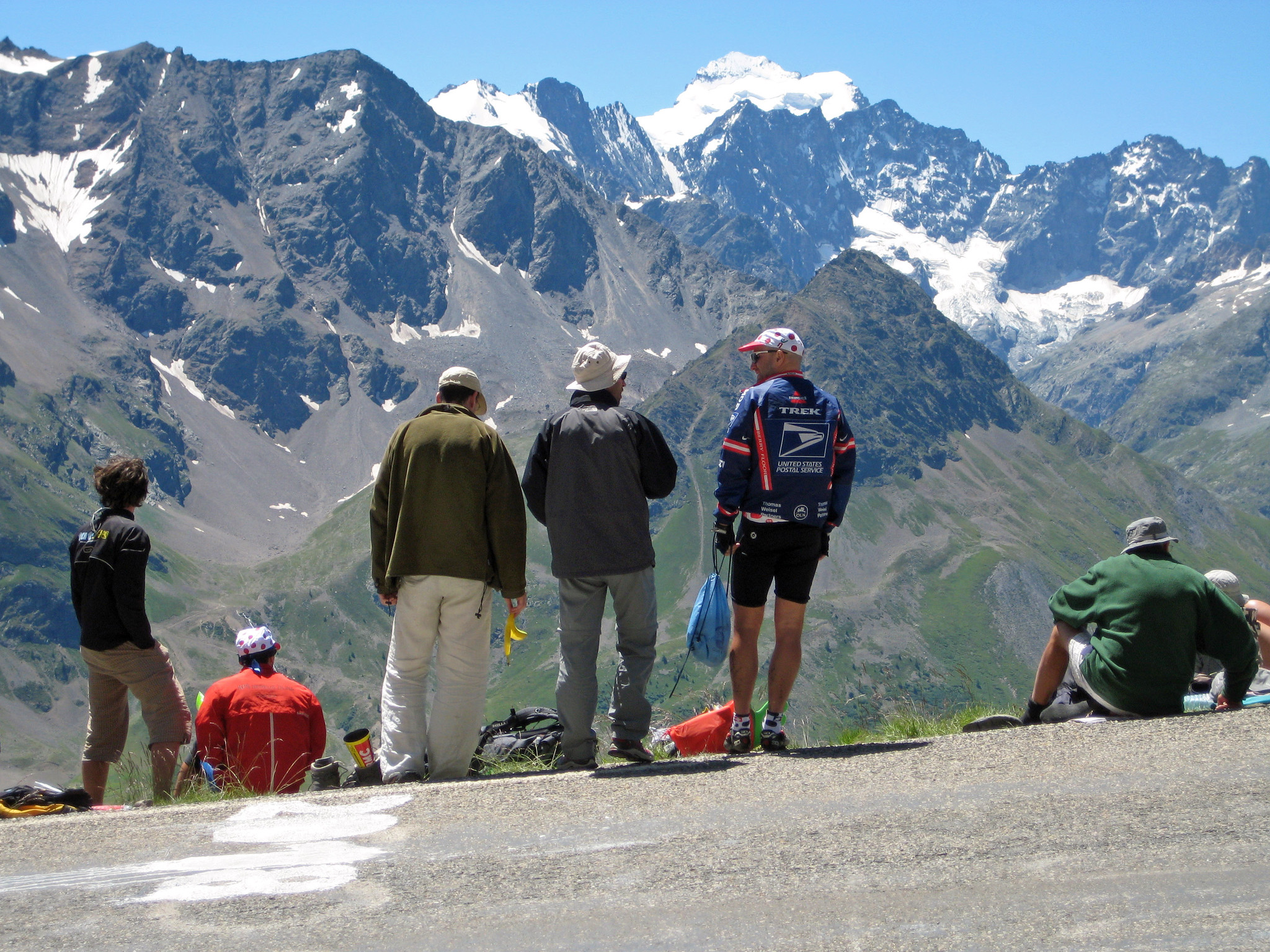
Tip: The little flat area at the summit will probably be closed to fans as it was in 2008. And the gendarmes won't appreciate "people" taking photos there. Sorry!

After summiting Galibier, the route descends the same north side that they climbed on the previous stage. A few kilometres down they will pass the Marco Pantini monument, commemorating the Italian cyclist for his epic stage victory in the 1998 Tour finishing up Les Deux Alpes (which included Galibier).

I can't imagine how fast the peloton will descend the 35 kms from the Galibier summit to the base of Télégraphe, but yikes. They will then glide through the Maurienne valley and begin the ascent of Col de la Croix de Fer.
This is a long, gigantic climb.
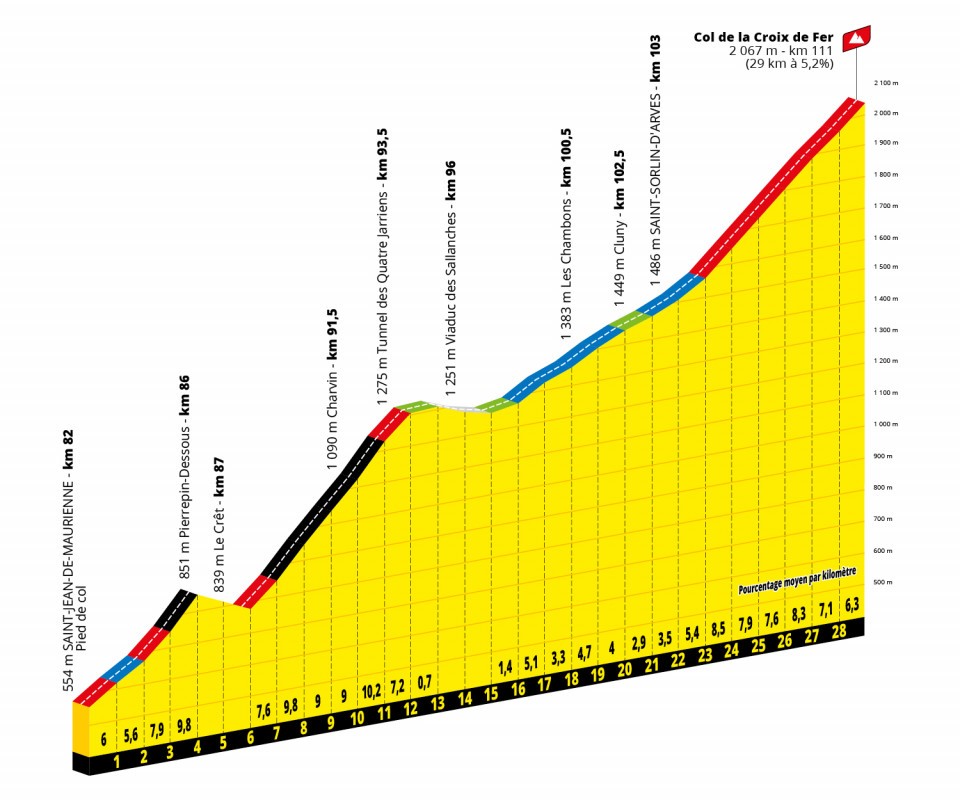
The final six kilometres of the climb are pure hairpin heaven. I can't wait to see the helicopter shots.
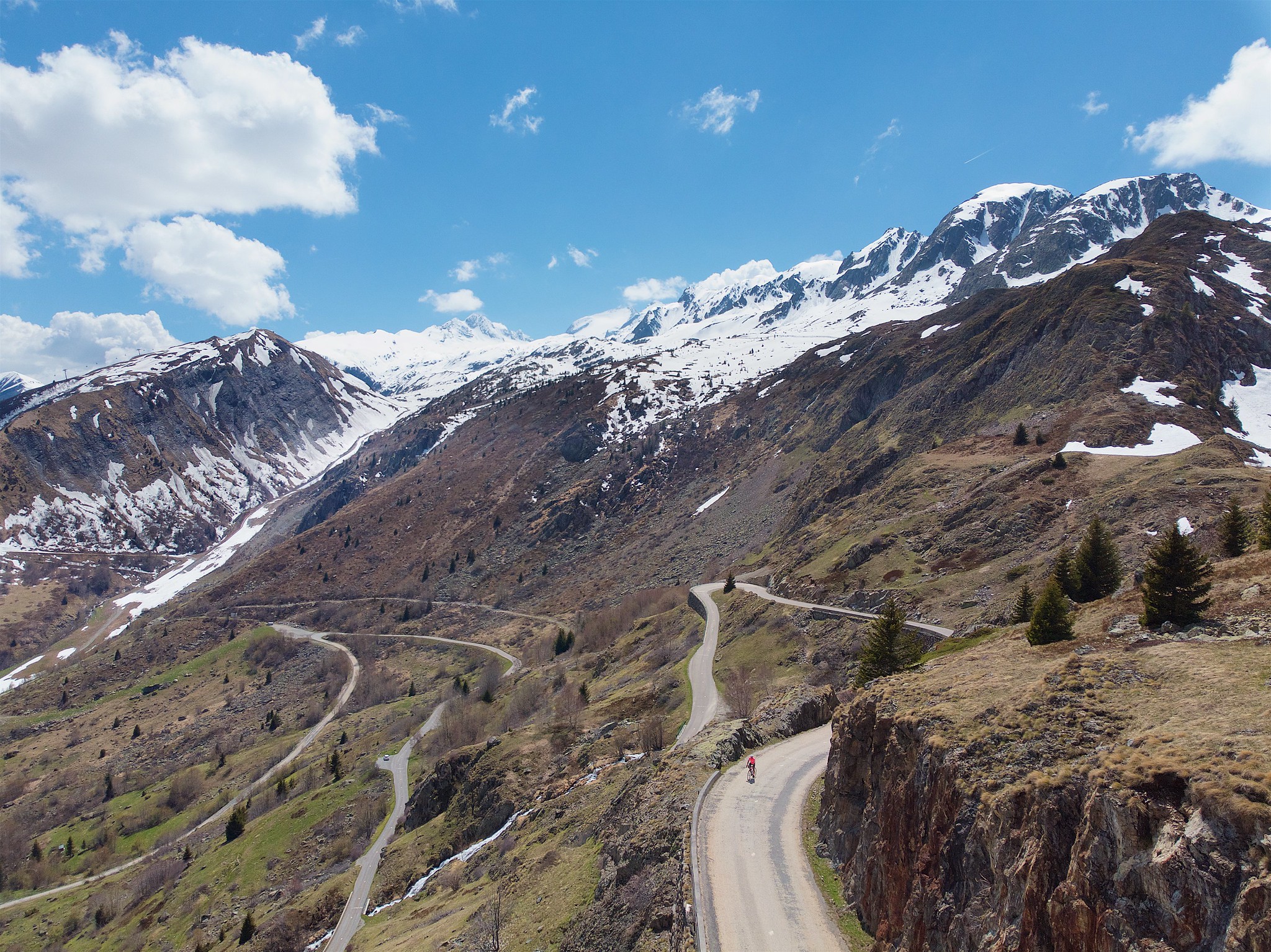

Tip: The French TV coverage will certainly point out the distinctive three peaks named Les Aiguilles d'Arve (below). Scream at your TV if your broadcasters don't know its name when the helicopters show them.
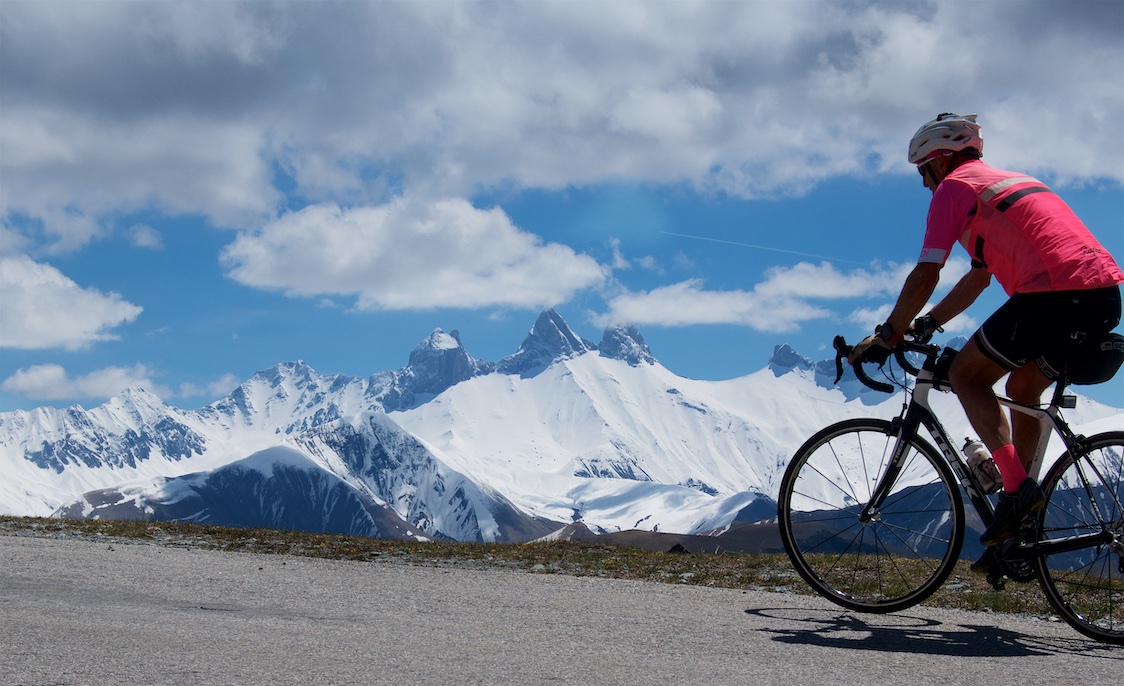
From the summit is another gigantic and generally not-technical 30 kilometre descent. At this point you can turn off the TV and go for a ride because the only thing remaining ......... is ALPE d'HUEZ and its 21 hairpins.


Tip: The hairpins count down as you climb. So the first hairpin is #21, Each hairpin has a sign with its number and the name of a stage winner (or two). The Italian legend Fausto Coppi won the first Tour stage here in 1952. And then some other fella. Also, remember, despite some bars/restaurants drawing lines on the road as you approach the village, the official finish line is through town.

Note, Podium Cafe was once many years ago painted on these hallowed hairpins. But someone defaced it!

I'll let you guys discuss in the comments who you think will win atop this legendary climb. As you know, I know nothing about pro cycling.
For the Cyclo-tourists
1. Did you know the old road up the south side of Col du Galibier still exists? First built in the 1880’s, this was the only way up the south side until 1938. As best I can tell it was abandoned/closed in 1947. This means that between 1911 and 1938 the Tour de France would have climbed or descended this road over twenty times. It is far to the east of the modern road and except near the beginning the two routes don’t intersect until the top near the Desgranges monument at the entrance of the tunnel (2556 metres). Here is a blog post where I cycled from Briançon to Galibier using this old road.

2. Exactly at the Col de la Croix de Fer summit, behind the col sign begins a little gravel road that goes far higher to a couple of alpine lakes and the Glacier de St. Sorlin. Truly spectacular. Details in this link.


3. I'll keep my Alpe d'Huez tip simple. After a victory photo at the top. Keep going. One can follow the paved road higher for 4 kilometres past Col de Poutran and reach Lac de Besson and Lac de Noir. Simple, quiet, and beautiful.

Stage 17: The Pyrénées

The very pretty Col d'Aspin has been in the Tour somewhere around 70 times, often used as a link between Tourmalet and Peyresourde. Hourquette d'Ancizan only made its Tour debut in 2012 as a sort of Aspin alternative. But now they are combined.
In between Aspin and Ancizan is the road that leads to St. Marie-de-Campan and Tourmalet. I am betting 10 beers that some announcer will still find a way to tell the Eugène Christophe forge story even without Tourmalet appearing in this year's Tour. Drink!
This is a scenic, medium difficulty stage.
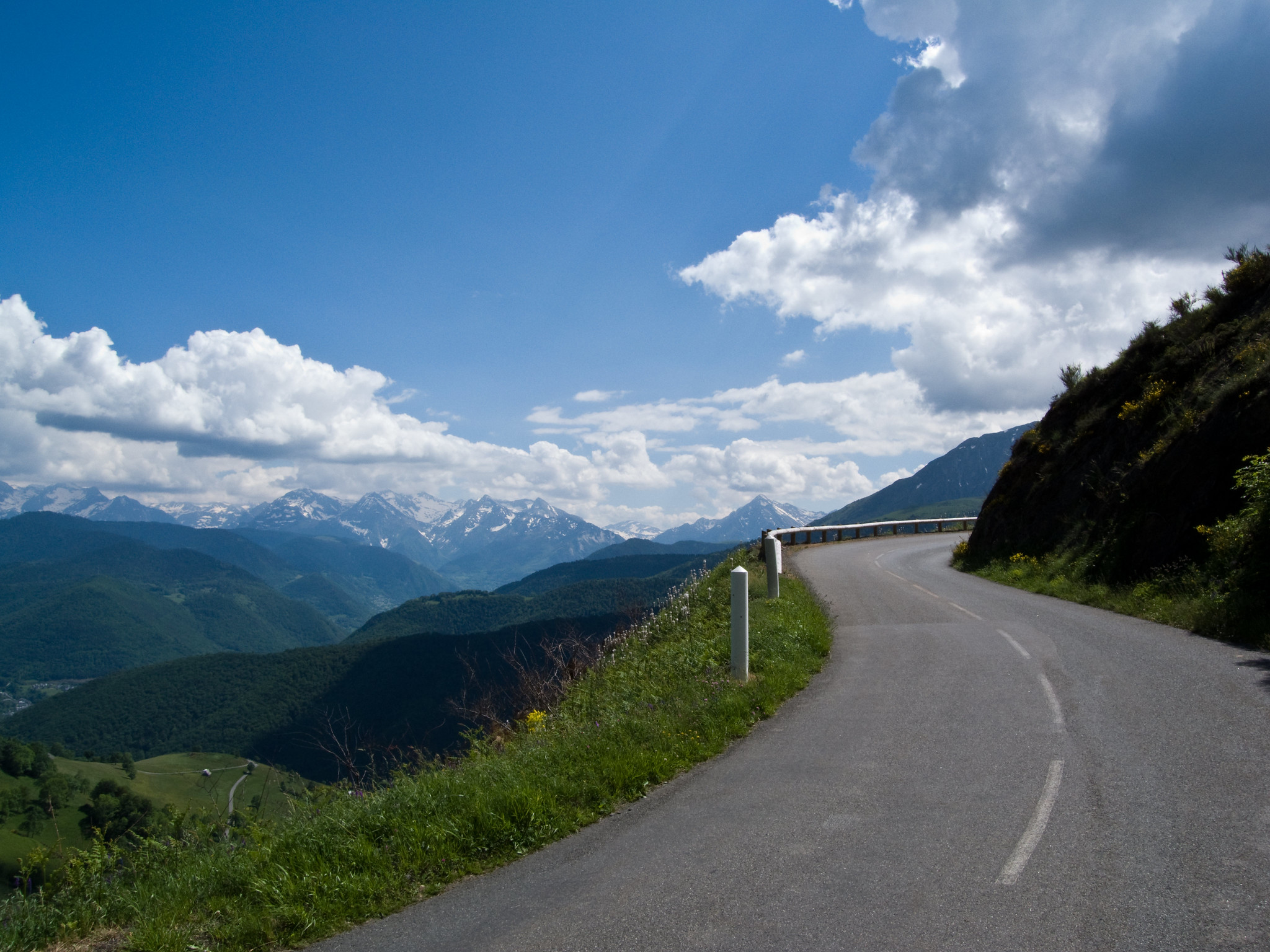
Hmm, do I have anything interesting or original to add. OK, I promise that people will confirm this as absolutely true:
Col d'Aspin is a cow col.

Hourquette d'Ancizan is a donkey col. I promise, but sorry I don't have a phone.
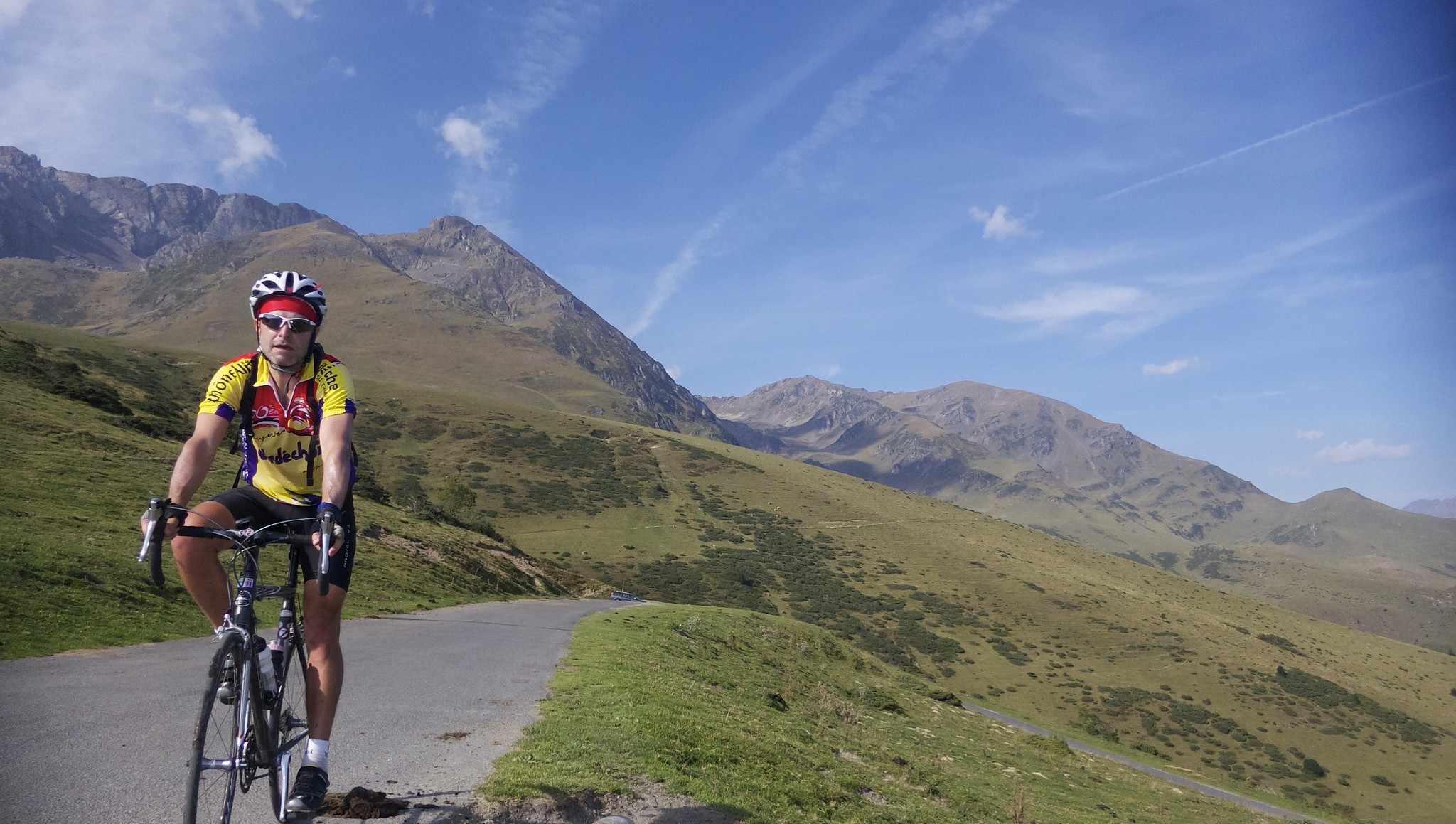
Col de Val Louron-Azet is formerly Col d'Azet but it was renamed because of the nearby Val Louron ski station. It is a cow col.

I've never ridden to the final climb at Peyragudes ski station, so please post a comment of you know its animal. Marmotte? :-)
Stage 19: The Pyrénées
This final mountain stage could decide the entire 2022 Tour de France with a challenging final climb up to Hautacam ski station. It's also a beautiful stage.

After an easy start the stage will attack the legendary Col d'Aubisque from the west side. The top of the descent is the famous cliff stretch of the Cirque du Litor.

It is here where Wim Van Est fell in the 1951 Tour.
Aubisque is a cow col. I once saw a dead cow a couple of kms from summit that had just fallen from above. I will NOT post the photo. So sad. But here's the toll collector for the Cirque du Litor.

The descent will pass Col du Soulor .... a sheep col.

The route will descend the less often used north side of Soulor. The views of this descent from Cirque du Litor are great. This will be another very good "helicopter" stage.
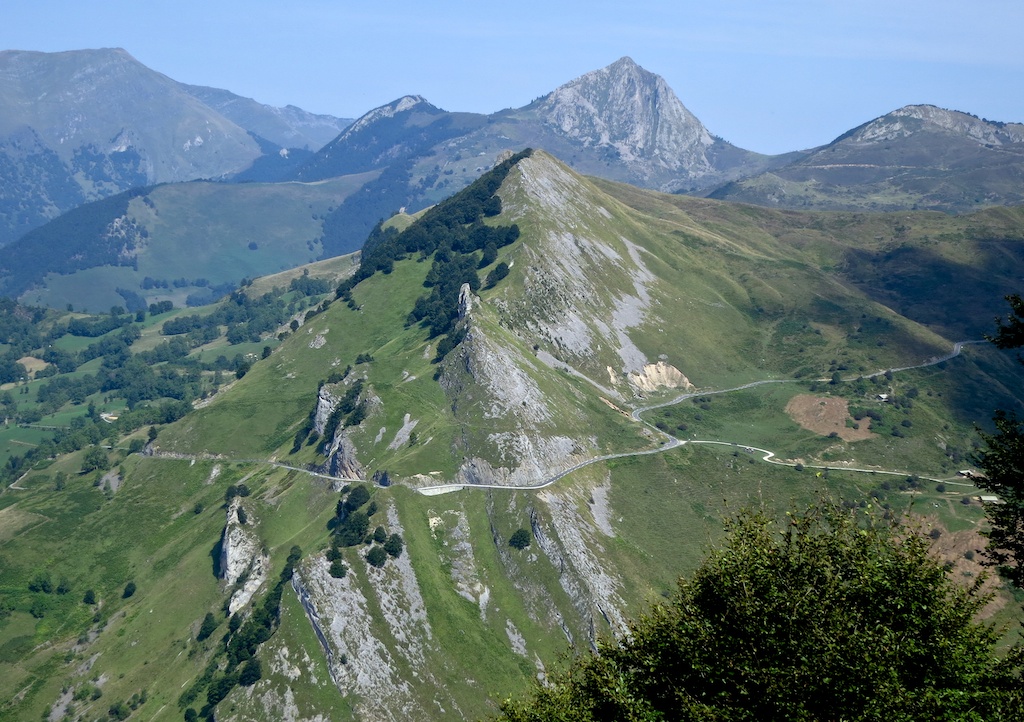
Amazingly, 2022 will be the Tour de France debut for Col de Spandelles. Wow. I will wager it has nice new tarmac as a reward. It's a fun, quiet climb, mostly forested on the descent side but very scenic on the side the Tour will climb.

Tip: Avoid the start town Lourdes. Although the Sanctuary of Our Lady of Lourdes is interesting. The town is unbelievably touristy tacky. It receives several million tourists every year and has more hotels per square kilometre than anywhere in France except Paris. The good cycling is further into the mountains.
Finally, the stage will climb Hautacam. Occasionally very steep, this will be a tough finish to the final mountain stage of the Tour.
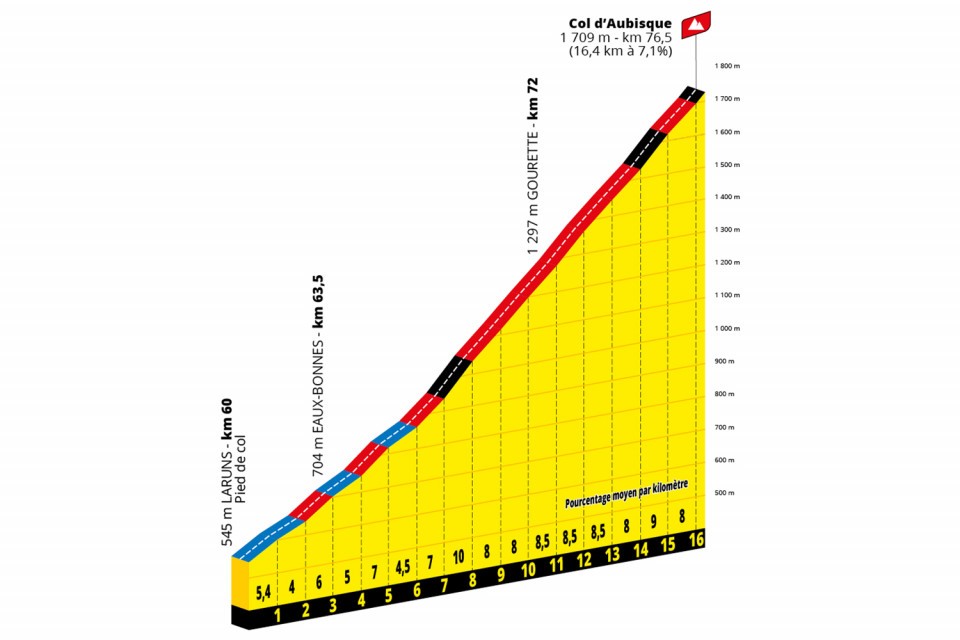
This will be the 6th Tour appearance for Hautacam. the first was in 1994 (Luc Leblanc). It is always a mountain-top finish as not a through road - although (cyclo-tourists please note) the paved road does continue 1.2 kilometres higher to Col de Tramassel. Hautacam is a horse climb:

When I visited Hautacam a house near the start of the climb has some wonderful artwork. Virenque gained weight after retiring?

For the Cyclo-tourists
Hautacam starts in a long valley that is at the base of so many brilliant cycling climbs: Tourmalet, Hautacam, Aubisque/Soulor, Spandelles, etc. And less well know, well down to the south are two truly stunning and very high climbs both over 2000 metres that don't seem to be well known.
Col des Tentes (2207m) is a hundred metres higher than Tourmalet and Cirque de Troumouse is just a touch lower. Highly, highly recommended.
Col des Tentes:
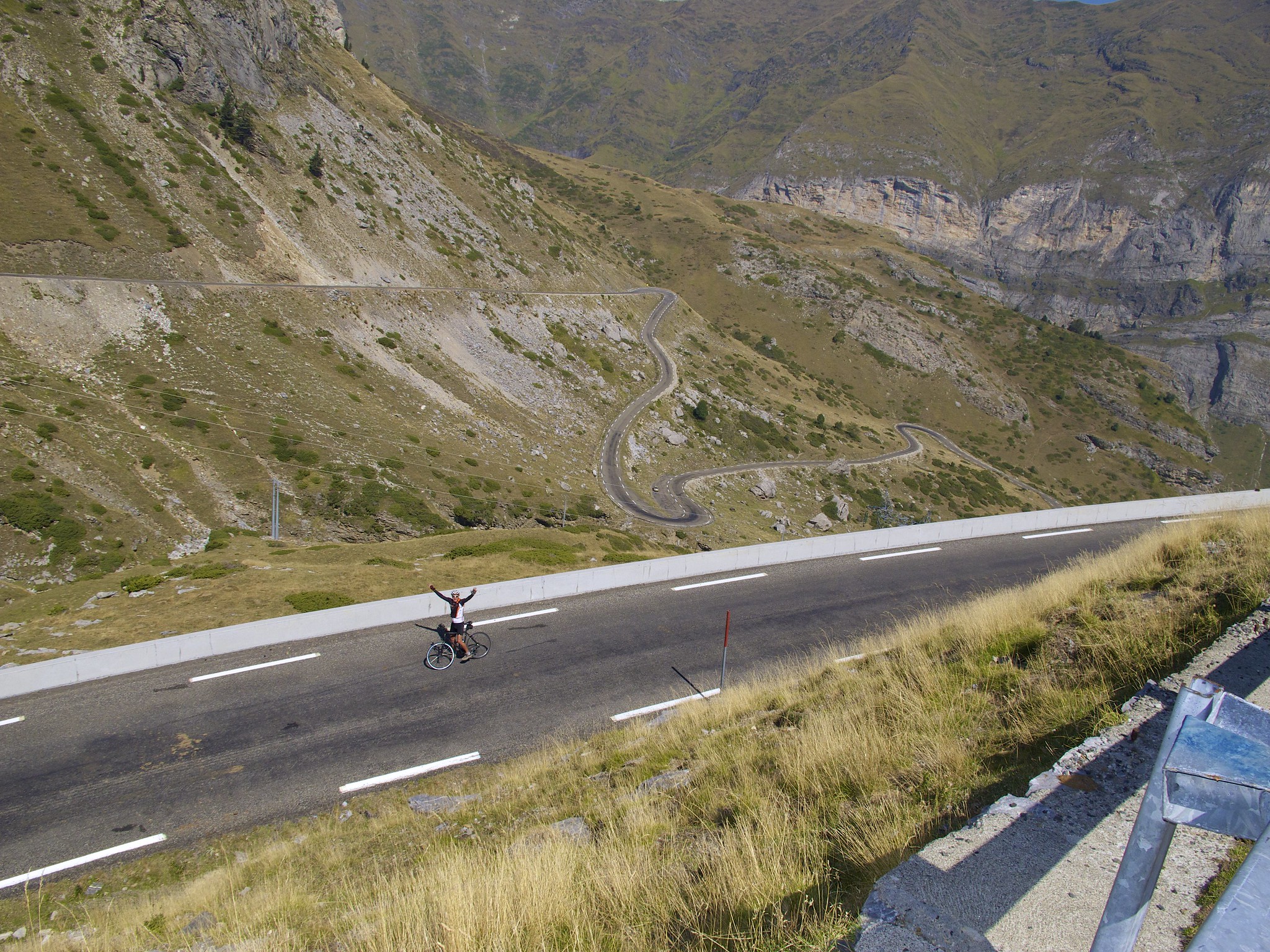
Cirque de Troumouse:
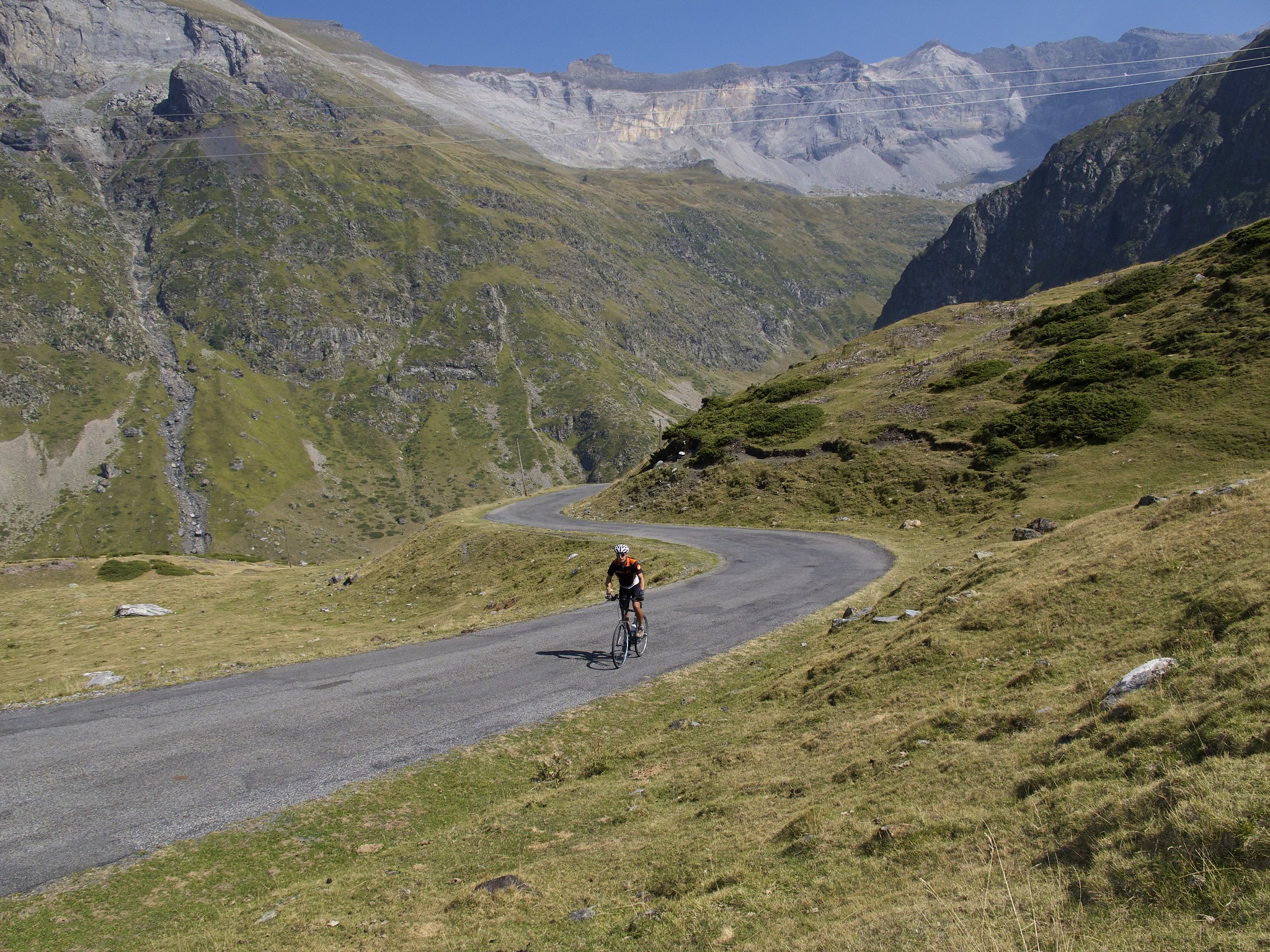
Cirque de Troumouse is a cow climb:

Final Thoughts
Hopefully, I have given a useful overview of the 6 mountain stages. I apologise for offering no insight as to which riders will enjoy these stages. I have no idea. But I have faith in you that you can use the comments to discuss,
Hmm, apparently I can no longer add polls. So please also use the comments to vote on which stage is the queen stage. I think there are only three possibilities. Either of the Galibier stages or the final Hautacam stage.
I hope you aren't angry with me but instead now proud experts of which animal belongs to the various Pyrénées climbs. So as a final note: not only is Col des Tentes a cow climb, the cow second from left is giving birth.
Thanks for reading,
Love Will


